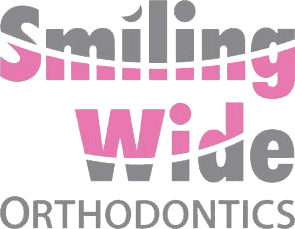VISIT OUR ORTHODONTICS OFFICE TODAY
Not sure where to begin? We understand that orthodontics can be a daunting and confusing experience. This is why the team at Smiling Wide Orthodontics have compiled some general information, as well as answers to questions we're most commonly asked. If you're ready to get started, call our clinic in Bundaberg, Maryborough or Hervey Bay to set up a consultation.
General
Braces
Herbst / CBJ / Hanks/ Forsus Appliance
One of the most common problems orthodontists are asked to treat is the discrepancy that occurs when the upper teeth protrude beyond the lower. Ordinarily, when we see a patient with the upper teeth protruding, we tend to think that the upper jaw and teeth are too far forward, but more often than not, this condition is due to a small lower jaw that is further back than it should be. With these patients, the orthodontist would like to encourage the lower jaw to catch up in growth, and braces like the Herbst appliance help this happen.
Potential Concerns
If the rod slides out of the tube while opening, open wide again and guide the rod back into the tube as you close.
If a screw or crown comes loose, save all pieces and call the orthodontist's office so they can repair the appliance. Bring all the pieces with you to the orthodontist.
Twin Block Appliance
The purpose of the appliance is to harness growth potential of the patient's lower jaw (mandible) for maximum orthodontic benefit.
Please note:
- The appliance must be worn at all times, even while eating. You should take it out while cleaning your teeth, playing sport or swimming.
- Patients may initially experience some tiredness in the joint area around the ear & muscles of associated regions.
- The appliance must be worn while eating, however it should be cleaned using a toothbrush & toothpaste to remove saliva residue & odours.
- When playing sport or swimming, this appliance should be kept safe in the case provided to avoid breakage or loss. If lost, replacement costs will apply.
- Usually speech will be affected for up to a week or so only. Continual wear for the first few days will reduce this speech disability markedly.
- The first night or two the appliance may not stay in the mouth whilst asleep. Continual wearing of the appliance will normally solve this.
If you have any further concerns regarding the wearing of this appliance, please contact Smiling Wide Orthodontics.
Andresen And Myofunctional Appliance
The purpose of the appliance is to harness growth potential of the patient's lower jaw (mandible) for maximum orthodontic benefit.
Please note:
- The appliance must be worn at all times except while eating, cleaning teeth, playing sport or swimming.
- Patients may initially experience some tiredness in the joint area around the ear and muscles of associated regions.
- The appliance should be cleaned using a toothbrush & toothpaste to remove saliva residue & odours.
- When playing sport or swimming, this appliance should be kept safe in the case provided to avoid breakage or loss. If lost, replacement costs will apply.
- Usually speech will be affected for up to a week or so only. Continual wear for the first few days will reduce this speech disability markedly.
- The first night or two the appliance may not stay in the mouth whilst asleep. Continual wearing of the appliance will normally solve this.
Removable Appliances
Your removable appliance must be worn at all times, preferably while eating. You should only remove your appliance when you are cleaning your teeth, playing sport or swimming. You may initially experience some tiredness in the joint area around the ear and the chewing muscles. This should settle within a few days.
When playing sport or swimming your appliance should be kept safe in the case provided to avoid breakage or loss. If lost, replacement costs will apply.
The first night or two the appliance may not stay in the mouth whilst asleep. Continual wearing of the appliance will normally solve this.
Please follow any instructions for expansion or screw to be turned.
CLEANING INSTRUCTIONS
After eating, remove the appliance and:
- Brush your teeth & gums especially where they are covered by the plate
2. Brush the plate with toothbrush & toothpaste
Never use boiling water to clean your appliance (U.R.A/Twin Block/Andresen/Essix/Retainer).
- Avoid chewing gum, sticky sweets & soft drinks
- Minimise cakes, sweet biscuits & lollies
- Do not move the appliance up & down with your tongue
At first you will have difficulty eating and talking and you will experience an increase in saliva flow. This will pass in a couple of days providing the plate is worn as directed.
REPLACEMENT APPLIANCES
- Will be charged for, so treat it with care
- If you have any problems which make it difficult to wear your appliance, please advise the surgery immediately
YOUR DENTIST
You must continue your regular visits to your dentist every 6 months or so, during the orthodontic treatment period.
Headgear
- Insert the bow-arch, placing one end only partly in one round large tube, then place the other end in the other tube. Now seat the bow-arch completely, teasing it, never forcing. The loops on the bow-arch face downwards.
- Now attach the neck-strap or head cap to the bow-arch, hooked on as instructed.
- Handle everything carefully, especially when removing or inserting the arch.
- Should a band which is cemented to a tooth become loose, call for an emergency appointment. Bring the band with you, of course, and all the other material as well.
- Protect the bow-arch when it's not in use by keeping it with the neck-strap in the container provided. Bring all this material to the surgery on each visit.
WHEN YOU SHOULD WEAR IT
You don't need to wear the head gear at school, but you must wear it every day—all night when you're asleep and a few of the waking hours to make up the difference. These hours need not interfere with after school playtime, since it can be worn while doing homework, watching TV or on the computer.
Only the first night or two may be uncomfortable, as the molars may be sore and falling asleep might be difficult. Once the neck-strap adjustment is started it must be adhered to continuously, wearing every day and all night. If you leave it off just one night you may have to wear it many extra nights later on.
PLEASE TAKE CARE
- Your headgear must be worn with care. It must be put in and taken out in a manner to prevent facial or eye injury.
- Never wear your headgear in rough play or any situation where it might be dislodged suddenly.
- Never remove the wire section without first removing the neck-strap or other elastic force.
- Never adjust or alter your headgear without instructions from your orthodontist.
Bonded Retainers
The bonded retainer has a wire bent inside the front teeth to retain the teeth in their new positions. This retainer will usually be kept in place for a longer period of time than a removable retainer.
Occasionally small seeds (strawberry or sesame) may be caught under the bonded wire retainer. A toothbrush will usually be sufficient to work out any such food.
If the bonded retainer becomes loose at any time during the retention period, please contact the surgery to have it re-bonded.






